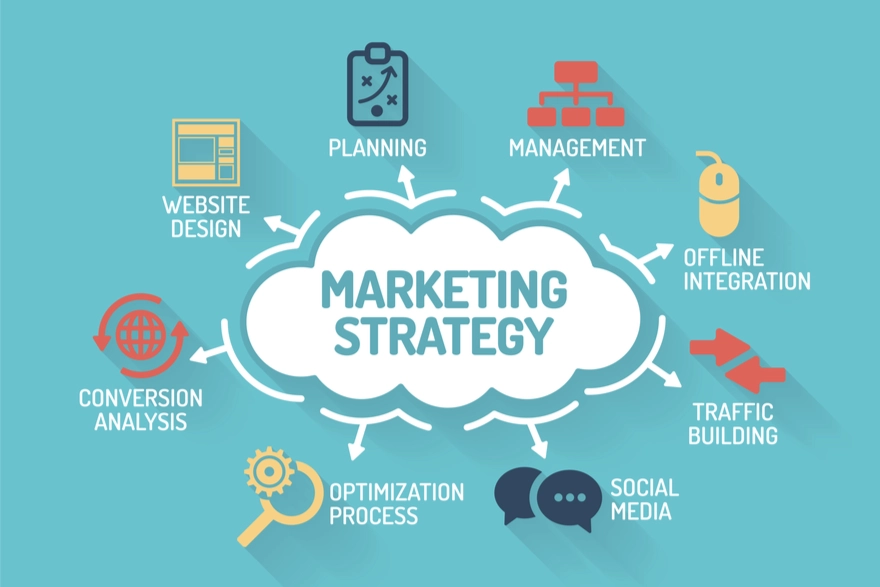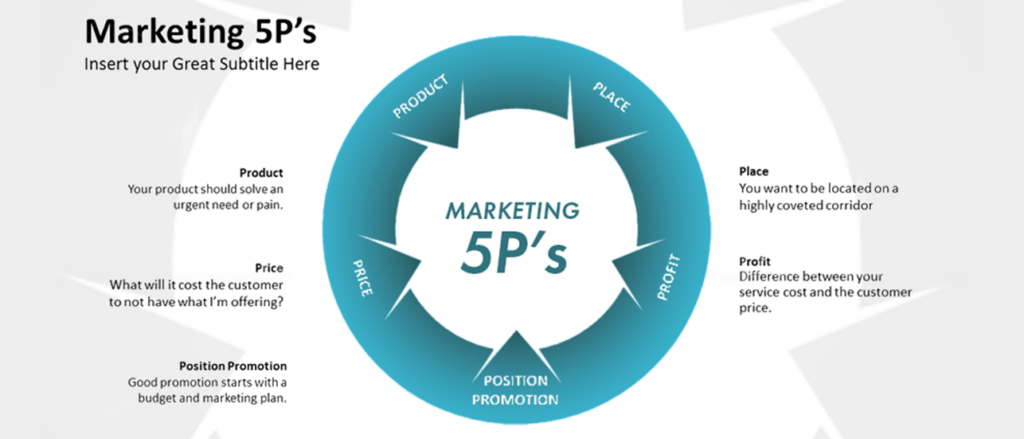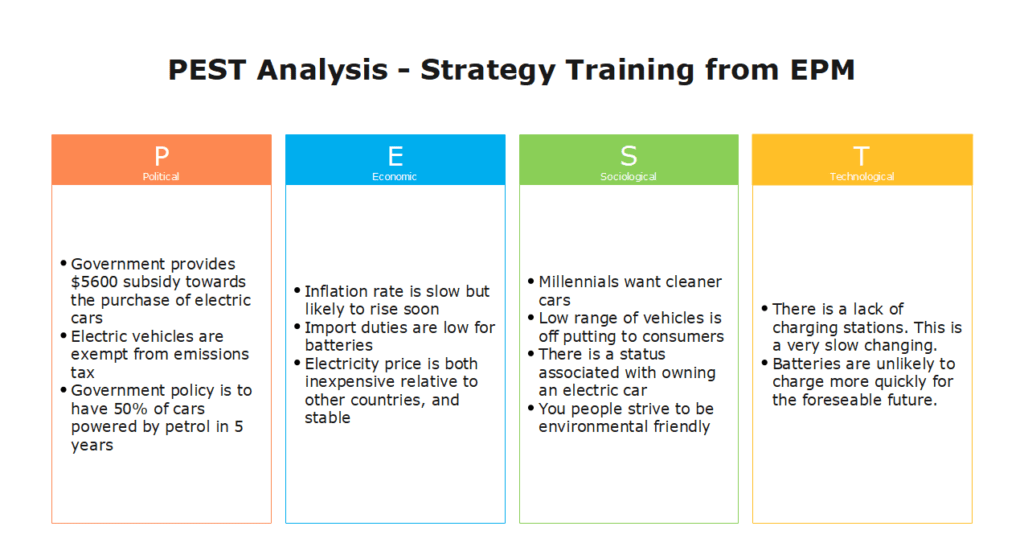Marketing planning strategy steps involve creating a plan to achieve marketing objectives. It begins with a situation analysis, examining internal and external factors that affect target market reach. It is an essential element of marketing.
The company forms its marketing strategy, comprising positioning, messaging, and target market. It then creates a marketing mix, a set of tactics to reach its target market. Finally, it implements and monitors the plan to achieve its objectives.
Importance of Marketing Planning
As the world of business becomes more and more competitive, the importance of marketing planning cannot be underestimated. An effective marketing plan will help your business to stand out from the crowd and to attract and retain customers.
There are a number of reasons why marketing planning is so important:
- It helps you to identify your target market
Understanding your target market is crucial for business success. The marketing division analyzes demographics and gathers insights into customers’ needs. This knowledge helps tailor products and develop effective marketing strategies for long-term success.
- It allows you to set achievable goals
Without a plan, it can be difficult to set realistic and achievable goals. A good marketing plan will help you to identify what you want to achieve and to set measurable goals. This will ensure that you stay on track and that your marketing efforts are focused.
- It keeps you organized
Marketing can be a complex and time-consuming task. A well-organized marketing plan will help you to keep track of your campaigns and to ensure that you are using your time and resources effectively.
- It saves you money
An effective marketing plan can save you a lot of money in the long run. By identifying your target market and understanding their needs, you can create a customized marketing strategy that is focused and cost-effective.
Bonus: It helps you to measure results
To know if your marketing works, measure results. Include goals, track outcomes, adjust strategy as needed to achieve desired results.
By taking the time to develop a well-thought-out plan, you can save yourself a lot of time, money, and hassle in the long run.
Steps for Marketing Planning Strategy


A marketing plan is crucial for business success. It outlines your approach, which may evolve based on company needs. There is no universal solution, as it depends on goals, budget, and target audience. However, all businesses should follow certain steps when creating their marketing strategy.
Research your target market and understand their needs and wants
To create an effective marketing plan, define your target market by understanding their needs and preferences. Research their characteristics, wants, and where to find them. This ensures your marketing efforts resonate with the right audience.
There are a variety of marketing channels that you can use to reach your target audience. Some of the most popular channels include, but are not limited to, television, radio, print, and online advertising. It’s important to select the channels that will be most effective for reaching your target market.
Set realistic objectives and goals
To create an effective marketing plan, start by defining your goals. Determine if you want to increase brand awareness, drive website traffic, or boost sales. Clear goals are vital for measuring success and staying on track. Make sure your objectives are specific, measurable, achievable, relevant, and time-bound.
Set clear sales growth targets and deadlines, focusing on areas within your control. Develop a detailed action plan with specific tactics to achieve these goals.
Situation Analysis
Situation analysis is analyzing an organization’s environment to find opportunities and threats that may affect its objectives. It helps make informed decisions about the organization’s current state, goals, and risks/opportunities.
Situation analysis is vital for marketing planning. It’s done at various levels, like industry and competitor analysis. The model helps set marketing goals and strategies, using SWOT analysis to identify strengths, weaknesses, opportunities, and threats. This analysis should be reviewed periodically for relevance and can also be used independently.
SWOT Analysis
The situation analysis includes a SWOT analysis (Strengths, Weaknesses, Opportunities, Threats). When conducting a SWOT analysis, organizations should consider both internal and external factors. Internal factors are those within the organization’s control, such as its culture, structure, and processes.
External factors, like competition, economy, and social trends, affect organizations. Analyzing the situation requires a knowledgeable team with access to data. Then, marketing objectives that are specific, measurable, achievable, relevant, and time-bound (SMART) are set. Finally, marketing strategies are developed to reach the objectives.
5C Analysis
A 5C analysis is useful for understanding an organization’s internal and external environment. It helps managers assess resources, capabilities, and potential impacts on success or failure. It also helps understand competitors’ strengths and weaknesses and how to exploit or defend against them.
The 5C framework is a helpful tool for analyzing a situation. It considers all relevant factors in the environment. Remember, it is not the only tool available, as SWOT analysis can also be useful.
The 5C framework is composed of five different concepts which are:


- Competition,
- Customers,
- Company,
- Collaborators, and
- Context.
Competition: When considering the competition, it is important to analyze the strengths and weaknesses of the organization’s competitors. This will help the organization to understand how they can exploit or defend against these. It is also important to consider the threats and opportunities that the competition presents.
Customers: It is important to consider the needs and wants of the organization’s customers when conducting a 5C analysis. This will help the organisation to understand how to best satisfy their customers.
The customer is the center of the 5C model, and the other elements of the model – company, collaborators, competitors, and context – all revolve around the customer. Customers’ needs and wants should be at the forefront of any organization’s decision-making process.
When conducting a 5C analysis, organizations should keep the following customer-centric questions in mind:
- What do our customers want?
- What do our customers need?
- How can we better meet our customers’ needs and wants?
- What are our customers’ unmet needs and wants?
- How can we better understand our customers’ needs and wants?
Company: When considering the company, it is important to analyse the strengths and weaknesses of the organisation. This will help the organisation to understand how they can improve their performance.
Collaborators: It is important to consider the organisation’s collaborators when conducting a 5C analysis. This will help the organisation to understand how they can best work with their collaborators.
Context: The context refers to the external environment in which the organisation operates. It is important to consider the political, economic, social, technological, legal, and environmental factors that could impact the organisation. These factors can help the organisation to understand the opportunities and threats that they face.
Marketing strategies should be based on insights from the situation analysis. Organizations should regularly review the analysis to keep it current. It helps organizations anticipate changes and make informed decisions about marketing plans.
PEST Analysis


You may also perform a PEST analysis (Political, Economic, Social, Technological), which is the same as a 5C analysis’s climate section. A PEST analysis (Political, Economic, Social, Technological) is a type of political analysis that examines how various factors outside your company’s control affect it.
PEST analysis is a crucial marketing tool that tracks external changes and assists in strategic decision-making. It includes Political, Economic, Social, and Technological factors, which impact a company’s performance. Political factors involve regulations and taxes, economic factors involve interest rates and inflation, social factors involve demographics and lifestyle trends, and technological factors involve R&D and technology diffusion.
PEST analysis identifies opportunities and threats in the external environment, aiding resource allocation. It is adaptable and complements SWOT analysis for a comprehensive understanding of competition. Use various tools for robust marketing plans. PEST analysis is a valuable addition to planning.
Research Your Competition


No matter how unique your product or service may be, you will always have competition. It is important to research your competitors in order to understand their strengths and weaknesses and how they are positioning themselves in the marketplace.
Once you identify your rivals, evaluate them. Gather information by listening to clients, friends, and neighbors discussing their products/services and keeping an eye on rivals’ marketing. Assess competitors by answering these questions:
- How do people in the community see your competitors?
- What are your competitors’ target customers and what markets do they focus on?
- Why have certain customers or groups of consumers particular liked or despised your rivals?
- What marketing techniques have your rivals attempted?
Develop your Marketing Mix
Marketing mix, also known as 4P of marketing, is a combination of strategies and tactics used to reach the target market and achieve goals. It consists of four elements: product, price, place, and promotion. By considering these elements, businesses can develop marketing strategies to reach their target market and achieve desired outcomes.
Four P’s of marketing
The 4 Ps are product, price, place, and promotion.
Product:
To develop a marketing strategy, start by identifying your product or service. Consider your target market’s needs and what you can offer. Then, decide on your product/service’s features and how it stands out from competitors.
Price:
Next, set a price based on your target market’s perceived value and production/marketing costs. Find a balance between pricing too high (losing customers) and pricing too low (losing profit).
Place:
When deciding where to sell your product or service, consider distribution channels and target market. Also, choose a location based on foot traffic and accessibility.
Promotion:
The last step in marketing strategy is deciding on promotion methods. Consider available channels and target audience to choose the most effective ones. Also, determine the message and best way to communicate it.
Create a Budget


Creating a budget is vital to ensuring that your marketing plan is feasible and within your means. Be sure to include all costs associated with each element of your marketing mix so that you have an accurate representation of what your total expenditure will be.
A marketing budget helps you make informed decisions by determining your spending limit. Choosing cost-effective options ensures a successful marketing plan. Search engines and paid social media ads allow flexibility in budgeting, making them accessible to all.
Implement and Monitor Your Plan
Once your marketing plan is finalized, it’s time to put it into action. Set goals, create a timeline, and track your progress to ensure success.
There are many online analytics tools that can help you track this. Make sure to only track data that is relevant to your business. This way, you can make effective measurements. Celebrate your successes and learn from your failures.
Evaluate and Adjust Your Marketing Strategy
Once you have implemented your marketing strategy, it’s important to measure the results. This will help you determine whether or not your efforts are successful and where you can make improvements.
Assessing marketing strategies reveals effective and ineffective approaches. Use this data to enhance your current plan and make informed decisions for future efforts. Analyze website, social media, and other marketing sources for insights on how people discover your home.
Repeat steps 1-8 as needed:
By following these steps, you can develop a marketing strategy that will help you achieve your business goals. Here we discussed some questions related to marketing planning strategy.
What are the three steps involved in the planning phase of the strategic marketing process?
The three steps involved in the planning phase of the strategic marketing process are:
- Setting marketing goals
- Conducting market research, and
- Creating a marketing plan.
The first step is setting marketing goals: specific, measurable, attainable, relevant, and time-bound objectives. The second step is market research, gathering info about the target market, consumer needs and wants, competitors, and trends. This leads to the third step, creating the marketing mix.
The marketing mix includes the 4 Ps of marketing: product, price, promotion, and place. The fourth and final step in the strategic marketing process is to monitor and evaluate results. This helps businesses track progress towards their goals and make necessary adjustments to the plan.
Which of the following represents the three major phases of a marketing plan?
- Action, adjustment and assessment,
- strategy, regulation and execution,
- Planning, implementation and control
- apply, design and manage
Answer: Option (C) is correct.
The marketing plan consists of three phases: preliminary (market research and objective development), implementation (execution and progress tracking), and evaluation (performance assessment and adjustments).
Which of the following is the first step in developing a marketing strategy?
- conducting a needs analysis
- identifying your target market
- developing your marketing mix
- setting your marketing goals
Answer: Correct option is (A)
The first step in developing a marketing strategy is conducting a needs analysis. This helps you to understand what your customers need and want, as well as how to best reach them. Once you have this information, you can begin to develop your marketing mix and set your marketing goals.
Which of the following is the third step in the marketing planning process?
- Define business and mission
- Set your objective and goals
- Create a budget
- Situation Analysis
Answer: Option (D) is correct.
The third step in the marketing planning process is situation analysis.
This step analyzes the marketing environment to assess the company’s current situation. It helps marketers understand opportunities, threats, strengths, and weaknesses. Marketers analyze the macroenvironment (economic, political, social conditions) and microenvironment (suppliers, distributors, customers), and then conduct a SWOT analysis.
Which of the following is part of the marketing process?
- Analyzing customer needs and wants
- Designing a product or service to meet those needs
- Developing a marketing mix
- Creating a sales plan
- All of the above
Answer: Option (E) is correct.
All of the above are part of the marketing process. Marketing starts with understanding customer needs and wants and designing a product or service to meet those needs. The marketing mix is then used to develop a sales plan.
Which of the following is not one of the three phases of the strategic marketing process?
- Determination Phase
- Situation Analysis
- Marketing mix
- Implantation and control
Answer: Option (A) is correct.
Determination is not a phase of strategic marketing process.
After you have put a marketing plan in place, it is important to do what?
Answer: Monitor your progress.
After implementing a marketing plan, monitor progress and adjust as needed. This ensures effective marketing and desired results. It also helps identify areas for strategy changes.
A firm’s marketing philosophy determines how strategic marketing activities are used to achieve.
- Customer response
- Desirable thought
- Business goals
- Efficiency
Answer: Option (C) is correct.
Which of the following are the two components of a global marketing strategy?
- Understanding foreign currency changes and developing goods that may be priced appropriately
- Creating advertising messages that appeal to foreign consumers and encouraging them to adopt domestic practices.
- To identify the specific target markets to pursue, as well as how to create a marketing mix in order to gain a competitive edge
- Adapting to new regulations and targeting as many people as possible.
Answer: Option (C) is correct. There are two key elements to a successful global marketing strategy: determining your target market and creating a marketing mix that will reach them.
The target market is the group of consumers that a company wants to reach with its products or services. The marketing mix is the combination of elements that a company uses to promote its products or services.
To target the market effectively, a company must understand consumers’ needs, wants, and the factors that influence their decisions. This helps in developing a tailored marketing mix for that market.
The four elements of the marketing mix are product, price, place, and promotion.
A company offers a product or service to consumers, who must pay a price to purchase it. The product is sold at a specific location, and the company promotes it by communicating with consumers.
Which of the following types of firms would be most likely to use a global marketing strategy?
- multinational
- multidomestic
- transborder
- transnational
- multicountry
Answer: Option (D) is correct.
Transnational firms operate in multiple countries and need a global marketing strategy to reach a wide customer base. Non-unique products like Coca-Cola or Nike are ideal for this approach.
Why is brand extension a popular marketing strategy?
There are several reasons why brand extension is such a popular marketing strategy.
Brand extension allows companies to use their existing brands to create new products and services, which helps them enter new markets efficiently and gain market share. It also helps differentiate their offerings from competitors and allows the new product or service to benefit from the positive attributes of the parent brand.
Brand extension helps build customer loyalty by offering more products and services. Yet, it carries risks like failing to meet expectations and confusing customers.
Therefore, it is important for companies to carefully consider the risks and rewards of brand extension before embarking on this type of marketing strategy.
Brand extension is a common marketing strategy that lets companies use their existing brands to enter new markets and stand out from competitors. However, it can confuse customers if the new offering is too different. So, companies must carefully weigh the pros and cons before pursuing brand extension.
Final Remarks
Marketing planning is crucial for business success. Despite various models, the process remains the same. The objective is to develop a plan that drives desired outcomes by considering all factors affecting reaching the target market. This maximizes the company’s success potential.
By taking all of these factors into account which we discussed above, organizations can develop a well-rounded understanding of their customers and the market landscape, which will ultimately help them make better business decisions.





















Leave a Reply
View Comments